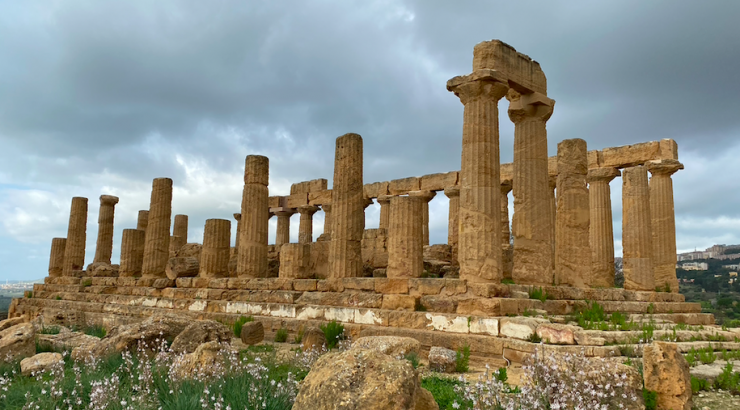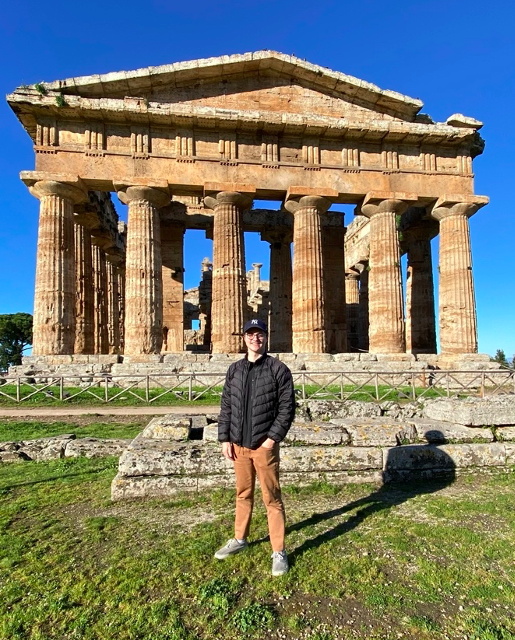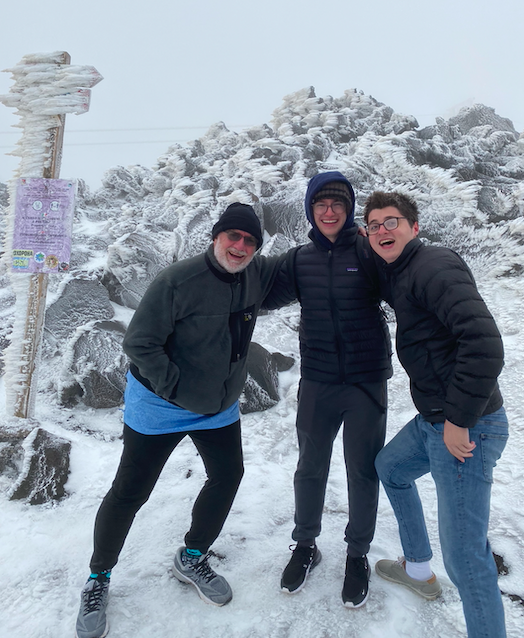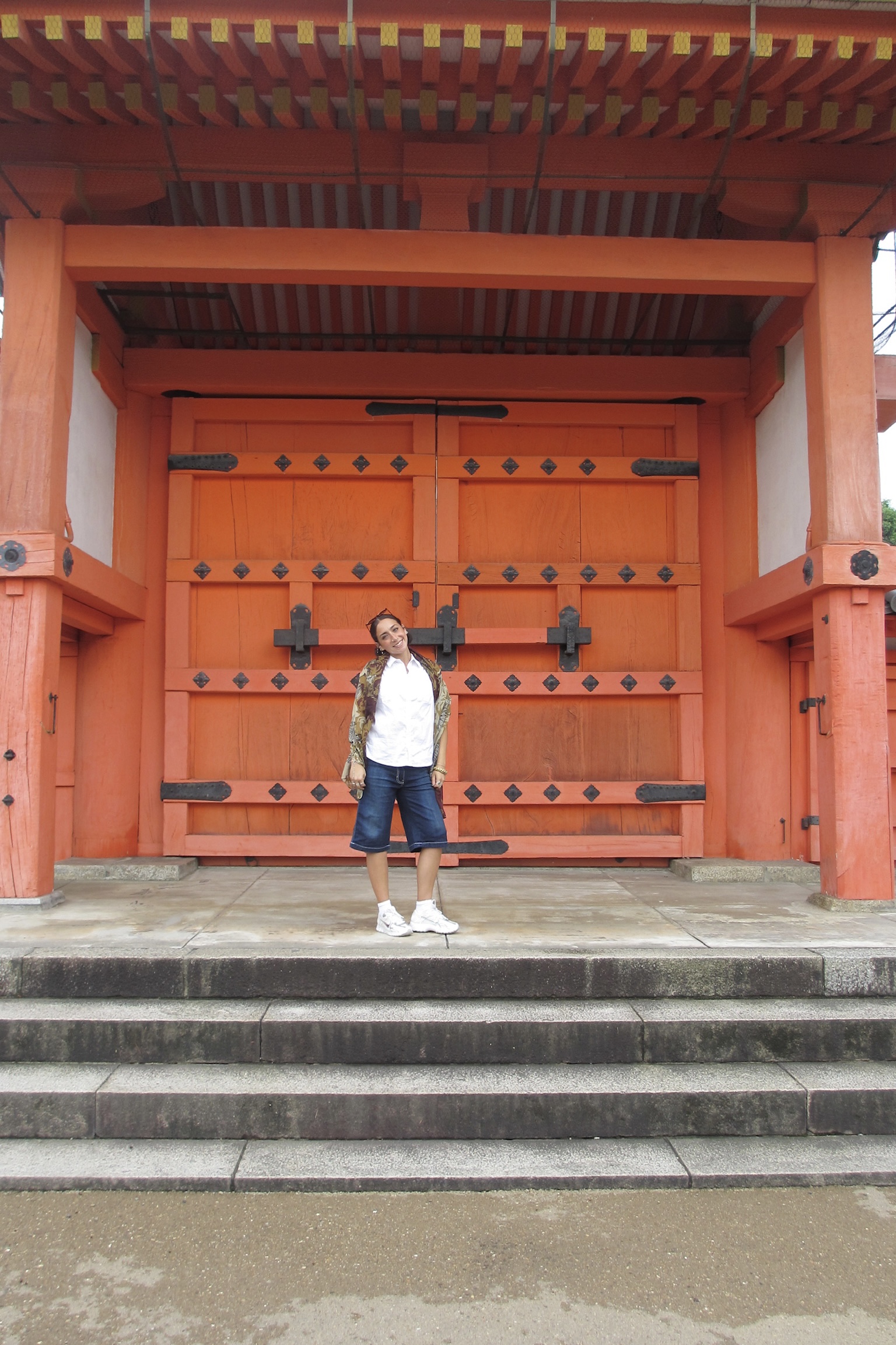
Untangling the Universe in Italy PHIL 310/MATH 310/COM 330: The Origins of Western Civilization Travel Course
February 22, 2023
I’m Thomas Jordan, a sophomore Computer Science student at Chapman University. I’m from Rochester, New York – home of the world-famous Garbage Plate. I’ve always loved math; It’s a form of problem-solving that no other puzzle can offer. I’m also a huge history buff. I love learning about civilizations of antiquity and how technology, science, and mathematics have influenced how we live today. I was so excited to learn about ancient Italian mathematicians and see where and how they made their discoveries.
 A central theme of this trip has been untangling the universe and showing that the math the ancient Greeks did laid the foundation for our understanding of the world today. One such example was Paestum, an ancient Greek colony in Magnea Gracia where ancient Pythagorean ideas can be seen throughout the temples there (Nabers & Wiltshire, 1980). Pythagoras and the Pythagoreans were a sect of mathematicians who furthered the study of Geometry (Huffman, 2018). Their designs and ideas can be seen throughout Paestum and were used in the construction of the breathtaking temples (Nabers & Wiltshire, 1980).
A central theme of this trip has been untangling the universe and showing that the math the ancient Greeks did laid the foundation for our understanding of the world today. One such example was Paestum, an ancient Greek colony in Magnea Gracia where ancient Pythagorean ideas can be seen throughout the temples there (Nabers & Wiltshire, 1980). Pythagoras and the Pythagoreans were a sect of mathematicians who furthered the study of Geometry (Huffman, 2018). Their designs and ideas can be seen throughout Paestum and were used in the construction of the breathtaking temples (Nabers & Wiltshire, 1980).
 Greek mathematics has captured my curiosity in a way that wouldn’t have been possible if I hadn’t seen the magnificence of their architecture, seen the tools used for their rituals, or saw the places where the ancient Greeks learned and taught, I wouldn’t have been able to fully appreciate their contributions to science and mathematics.
Greek mathematics has captured my curiosity in a way that wouldn’t have been possible if I hadn’t seen the magnificence of their architecture, seen the tools used for their rituals, or saw the places where the ancient Greeks learned and taught, I wouldn’t have been able to fully appreciate their contributions to science and mathematics.
One of the hardest parts of this trip was learning how to communicate in areas where people don’t speak English. It was a learning curve figuring out what hand-gestures and words – both in English and German – would convey what I wanted. Ordering food or asking for directions were things I didn’t even give a thought to in the United States but were real challenges on this trip. In Judith Martin’s Intercultural Communication in Contexts, Dr. Martin explains that there is a lot of complexity when switching between languages or communicating with speakers outside your language (Martin & Nakayama, 2010). For instance, it is impossible to get across the exact meaning of what you want to say (Martin & Nakayama, 2010). In English I can say “I am an American” and other English speakers will understand what I am saying, but if I tried to say, “I am an American” to a multilingual Italian and German speaker, I would try and say “Ich bin ein Amerikanner” (I am more comfortable speaking in German). This is grammatically incorrect. The correct way of saying it would be “Ich bin Amerikaner”, inserting “ein” (“a” in English) is a language overlap. When deciding to speak in English, German, or Italian, I would gravitate to the Italian words I knew, then German and English. Dr. Martin gives a variety of reasons for why people switch languages when communicating, and calls this phenomenon “code switching” (Martin & Nakayama, 2010).
Italian food is amazing. It is perhaps some of the best food in the world. Not only was the food delicious, but how the food was made was fascinating. With food from the United States, it’s common to feel bloated or sick after you eat, but in Italy, I ate twice as much, and I feel great. After learning more about Italian food, I learned about the culture around freshness and organic farming. In Italy, there is a rich “food culture” (Renna et al., 2015). The so called “Mediterranean diet” is a way of growing food, cultivating it, and eating it that results in good food with little negative health effects (Renna et al., 2015). Experiencing this culture firsthand made me realize that portion size was not the only thing that mattered. I made a promise to myself that from now on, I will pay attention to the ingredients on the back of the box, not just what kind of food is in it.
 I have learned so much during my time in Italy. I learned about the mathematicians that laid the groundwork of modern science nearly 2000 years ago. I learned about philosophy, history, cultural interaction, and so much more. This was a once-in-a-lifetime experience, and I am incredibly grateful that I got to experience it. I saw ancient majesty, learned about old answers to the secrets of the universe, adapted to communicate with people who can’t speak my native language, and I discovered and am committing myself to new goals I wouldn’t have thought about before this trip.
I have learned so much during my time in Italy. I learned about the mathematicians that laid the groundwork of modern science nearly 2000 years ago. I learned about philosophy, history, cultural interaction, and so much more. This was a once-in-a-lifetime experience, and I am incredibly grateful that I got to experience it. I saw ancient majesty, learned about old answers to the secrets of the universe, adapted to communicate with people who can’t speak my native language, and I discovered and am committing myself to new goals I wouldn’t have thought about before this trip.
Works Cited
Huffman, C. (2018). Pythagoras. In E. N. Zalta (Ed.), The Stanford Encyclopedia of Philosophy (Winter 2018). Metaphysics Research Lab, Stanford University. https://plato.stanford.edu/archives/win2018/entries/pythagoras/
Martin, J. N., & Nakayama, T. K. (2010). Intercultural communication in contexts (5th ed). McGraw-Hill Higher Education.
Nabers, N., & Wiltshire, S. F. (n.d.). The Athena Temple at Paestum and Pythagorean Theory. Platonic solid | mathematics | Britannica. (n.d.). Retrieved January 23, 2023, from https://www.britannica.com/science/Platonic-solid
Renna, M., Rinaldi, V. A., & Gonnella, M. (2015). The Mediterranean Diet between traditional foods and human health: The culinary example of Puglia (Southern Italy). International Journal of Gastronomy and Food Science, 2(2), 63–71. https://doi.org/10.1016/j.ijgfs.2014.12.001

